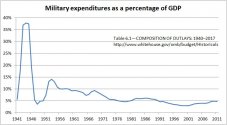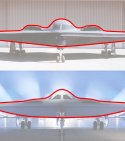We will see if they can actually keep costs down while moving to mass production. But a large number of stealth bombers as cruise mssile trucks is a pretty credible threat against Chinese naval assets.
B-2s, was meant to be procured in the 100s, Congress slashed plans to purchase 132 bombers to 21...We will see the fate of B-21 too but right now, they need to replace numbers so maybe it will have a better future than B2. But it will be a credible threat to any country even if it end at 50.
Indeed.
Besides, here's the key: The B-2s had its first flight in 1989, and introduced into USAF service in 1997 - The period when the primary threat to the US, i.e. the USSR had been diminished to nothing. In the 1990s and 2000s, the US is basically the sole global superpower, and nobody else anywhere is capable of posing any significant challenge to the US. This meant that there weren't any credible reason for the US government to keep funding the expensive B-2 program, which is why there were only 21 B-2s being made (with the rest 111 B-2 orders cancelled).
Meanwhile, the B-21 was revealed to the public today (Dec 2022), when the US sees itself facing another significant challenger to its hegemony and a rising superpower deemed threatening enough to its hold of power on the global stage, i.e. China. In fact, the Pentagon has been rapidly preparing for war with China in the Western Pacific over Taiwan for the better later half of the last decade, and their effort only would only continue to intensify as we move further into the 2020s.
Henceforth, it would be
EXCEPTIONALLY STUPID for China (or anyone, really) to actually think and believe that the US would repeat the same mistake and not digging into their couches in search of more pennies in order to build 100s of those so-called ""downgraded B-2s"" (which I would refrain from making any verdict and conclusion until we can observe more of the bomber later) to employ in their fight against China in the future.
In this context, we should expect that the US would jack up their military spending to way beyond 3.7% of its GDP for the coming years. As a matter of fact, the military expenditure as percentage of the GDP of the US has rarely went below the 5% mark for the entire duration of the Cold War.

Due to this, we should expect Washington DC to resort to the same measures again in this Second Cold War, even if doing that means signficantly cutting into the spending of other sectors of the US economy that are more related and vital to the lifelihood of the American people.


